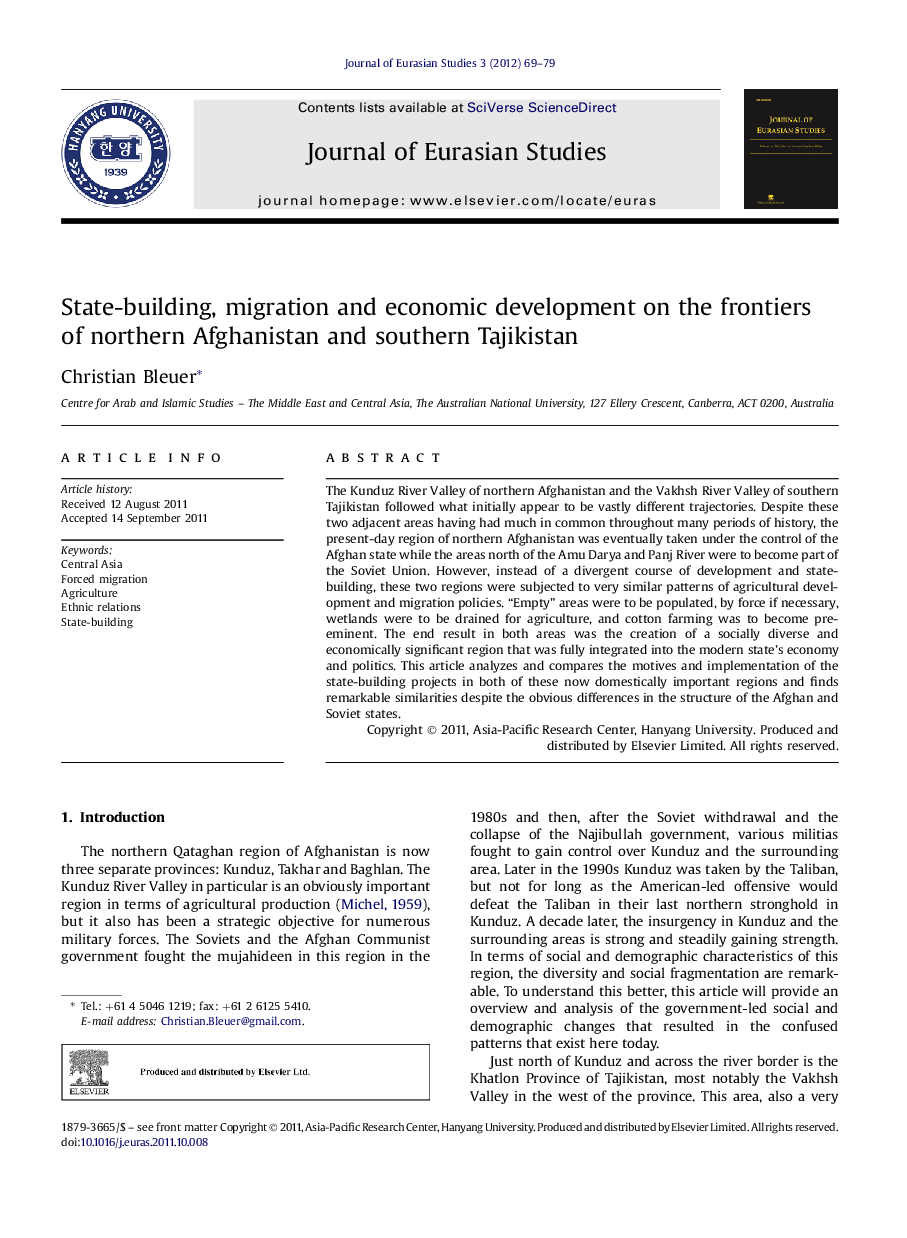| Article ID | Journal | Published Year | Pages | File Type |
|---|---|---|---|---|
| 1127317 | Journal of Eurasian Studies | 2012 | 11 Pages |
The Kunduz River Valley of northern Afghanistan and the Vakhsh River Valley of southern Tajikistan followed what initially appear to be vastly different trajectories. Despite these two adjacent areas having had much in common throughout many periods of history, the present-day region of northern Afghanistan was eventually taken under the control of the Afghan state while the areas north of the Amu Darya and Panj River were to become part of the Soviet Union. However, instead of a divergent course of development and state-building, these two regions were subjected to very similar patterns of agricultural development and migration policies. “Empty” areas were to be populated, by force if necessary, wetlands were to be drained for agriculture, and cotton farming was to become pre-eminent. The end result in both areas was the creation of a socially diverse and economically significant region that was fully integrated into the modern state’s economy and politics. This article analyzes and compares the motives and implementation of the state-building projects in both of these now domestically important regions and finds remarkable similarities despite the obvious differences in the structure of the Afghan and Soviet states.
